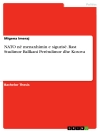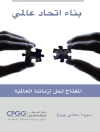Both revolutionary and reactionary, the Islamic Republic of Iran has long been a conundrum for Western observers. A theocracy that aspires to a popular mandate; an anti-colonial state with imperial pretensions of its own: modern Iran is in many ways a reflection of its struggle to reconcile its traditions with the challenges of modernity.
In this book, Ali Ansari takes readers on a journey through Iran’s turbulent history. Beginning with the country’s fall from grace as a Great Power in the nineteenth century, he explores its repeated attempts to modernize in a series of revolutionary movements from the Constitutional Revolution of 1906 to the Islamic Revolution of 1979 and the civil unrest that is breaking out today. In so doing, he reveals how the experience of history and Iran’s encounter with ‘modernity’ have come to define it – and set it on an authoritarian path in confrontation with the West and, often, its own people.
Inhoudsopgave
Map
Acknowledgements
Introduction: A revolutionary land
1. A Constitutional Revolution (1905-1914)
2. The rise and rule of Reza Shah (1914-1940)
3. Oil and Nationalism (1941-1953)
4. The ‘White’ Revolution (1954-1977)
5. Revolution and War (1978-1988)
6. Building an Islamic Republic (1989-2000)
7. Crisis of authority (2001-2009)
8. Paranoid Sate (2010–)
Further Reading
Notes
Index
Over de auteur
Ali Ansari is Professor of Iranian History and Founding Director of the Institute for Iranian Studies at the University of St Andrews.












